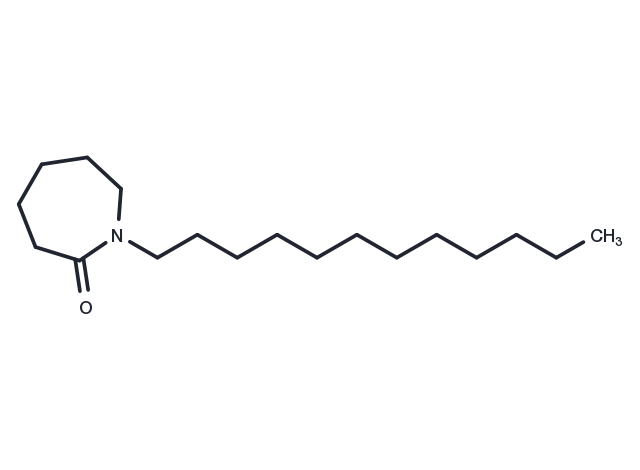Powder: -20°C for 3 years | In solvent: -80°C for 1 year


Laurocapram (N-Lauryl caprolactam) is a percutaneous enhancer. Upon application to the skin, laurocapram interacts with lipids in the stratum corneum and may enhance the ability of the skin to absorb a hydrophilic chemical.

| Pack Size | Availability | Price/USD | Quantity |
|---|---|---|---|
| 1 g | In stock | $ 29.00 |


| Description | Laurocapram (N-Lauryl caprolactam) is a percutaneous enhancer. Upon application to the skin, laurocapram interacts with lipids in the stratum corneum and may enhance the ability of the skin to absorb a hydrophilic chemical. |
| Synonyms | Tranzone, Azone, N-Lauryl caprolactam, N-0252, N-Dodecylcaprolactam |
| Molecular Weight | 281.48 |
| Formula | C18H35NO |
| CAS No. | 59227-89-3 |
Powder: -20°C for 3 years | In solvent: -80°C for 1 year
DMSO: 50 mg/mL (177.63 mM)
You can also refer to dose conversion for different animals. More
bottom
Please see Inhibitor Handling Instructions for more frequently ask questions. Topics include: how to prepare stock solutions, how to store products, and cautions on cell-based assays & animal experiments, etc.
Laurocapram 59227-89-3 Others hydrophilic inhibit Inhibitor Absorption N0252 Tranzone N 0252 Azone N-Lauryl caprolactam N-0252 lipophilic enhancer N-Dodecylcaprolactam inhibitor
